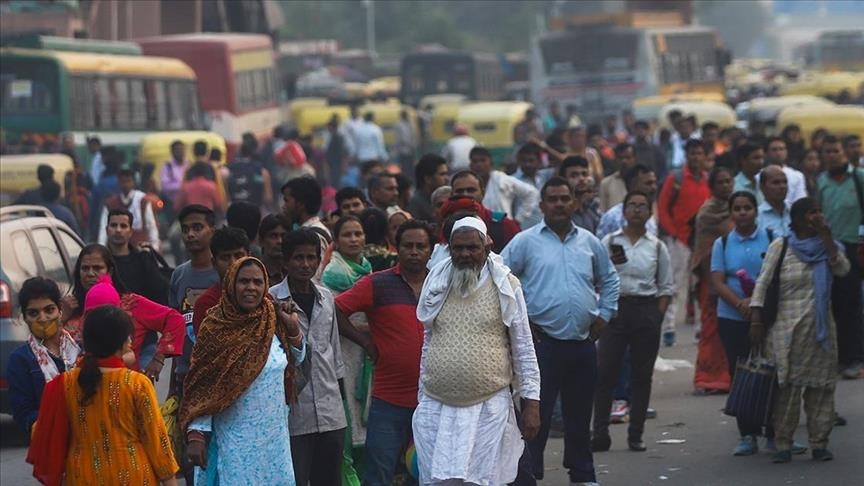ANKARA / BEIJING
India has overtaken China to become the world’s most populous country as of April 2023, according to the UN.
China’s population has started to fall, while India’s population is expected to continue growing until 2064.
While China made the 10-year census in 2020, India postponed the 10-year census it planned in 2021 on the grounds of the COVID-19 outbreak.
As the New Delhi government plans to hold the census in 2024, the figures for India are based on estimates and projections rather than official data.
In fertility rates of China and India were about the same in the early 1970s. The healthy birth rate per woman was 5.8 in China and 5.5 in India. By the end of the 1970s, the birth rate in China had fallen to 2.7, while in India, it remained high at 4.8.
The decline in birth rates in China was more rapid with population control policies, while in India, it spread over a long period of time. While China had one of the lowest fertility rates at 1.2 births per woman in 2022, India still has 2.0 births per woman, is just below the replacement threshold of 2.1.
China’s population growth rate fell faster than India’s, and its population growth rate fell from 2.6 % in 1970 to less than 1% in 1994. In India, whose population growth rate was 2.2 % in 1970, less than China’s, the rate fell to less than 1% in 2021.
While the population of China will reach its peak in 2022, it is predicted that India will reach it in 2064. The two countries follow markedly different paths in terms of demographic change in the modern era, where life expectancy is rising and families are getting smaller.
Different paths followed in population policies have had an impact on the distribution of the population by age groups over the years.
The rapid decline in the fertility rate in China since the 1970s has led to a lower share of the population under 25 years- old today than in India. The 25-to-64-year-old population in China is nearly twice the population under 25 years old, while this is only 20 % higher in India.
While the rapid increase in the middle-aged working-age population is the engine of rapid economic growth in China, this group is expected to decline in the coming years due to the general decline in the population.
In India, on the other hand, it is predicted that the change in the working-age population will develop more slowly and that it will continue to contribute positively to economic growth until the middle of this century, thanks to the still large share of the young population.
UN data show that in the 2023-2050 period, the population over the age of 65 will double in China, this increase will be more than doubled in India, and this situation may create a burden on the health and social insurance systems of countries.
The population over the age of 65 in China constitutes 14% of the total population in China and 7 % in India. By 2050, these rates will reach 30% of the population in China and 15% in India.

